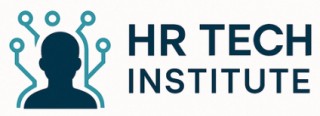
The Role of Verbal Verification in HR
The process of verifying employment through verbal communication plays a pivotal role in the realm of Human Resources and its intersection with various sectors such as real estate and lending. Verbal verification is often seen as a quick and efficient method for confirming a borrower's employment status, especially during the closing phases of mortgage and loan approvals. For lenders, knowing the employment status and income of an applicant is fundamental as it directly impacts the loan eligibility and approval process.
At the heart of verbal verification, or verbal VOE, is the practice of contacting the employer directly over the phone to confirm the employee's work details. This form of verification can satisfy requirements laid out by major housing finance entities such as Fannie Mae and Freddie Mac, which may dictate a preference between verbal and written verification methods. Moreover, understanding an employee's work history, income employment, and standing is essential for legal documents and employment forms that support these financial assessments.
Incorporating verbal verification into the HR verification process comes with its share of efficiency gains, offering a faster alternative when compared to written communication. This can result in reduced verification times, enabling quicker decision-making for mortgages and loans. For more insights on enhancing efficiency in HR management, examining various verification methods in practice becomes essential, especially in tech-driven HR environments.
How Verbal Verification Works
The Process of Employment Verification Using Verbal Communication
In the realm of human resources, verbal verification is a crucial step for confirming an employee's work history and employment status. This process involves using verbal communication to verify employment details such as job title, employment duration, and employment income. Unlike written verifications that rely on legal documents or forms, verbal verification is more dynamic and conversational.
Employers or their representatives often conduct verbal verifications over the phone. When a third-party verifier, such as a lender assessing loan eligibility, calls the employer, the conversation typically includes confirming the employee's position and recent income
employment details. Additionally, data concerning whether they are full-time or part-time may be requested.
The verbal verification can also be part of the mortgage or real estate transaction process. For instance, during the closing period of a mortgage, verbal verification of employment (VROE) might be needed to ensure the borrower's financial situation hasn't changed.
Companies like Fannie Mae and Freddie Mac have their guidelines on how these verifications should be conducted to keep the process standard and reliable. Verbal verification might use the Work Number, a system that provides real-time employment verification data. This adds an extra layer of accuracy by comparing the verbal data with a verified online database.
This reliable form of verbal communication is crucial for various stakeholders like the loan lenders, employees, and employers themselves.
Still, the verbal verification process is not without challenges, especially where human errors and miscommunications can occur. To learn more about such dynamics and the role of individuals within organizations, check out our piece on understanding the core duties of a payroll manager.
Benefits and Challenges of Verbal Verification
Pros and Cons of Relying on Verbal Validation
Verbal verification of employment plays a pivotal role in various financial sectors, especially during steps like loan processing and mortgage approvals. Understanding the benefits and challenges of this form helps employers, employees, and lenders ensure accuracy and efficiency in the employment verification process. One of the key advantages of verbal verification lies in its speed and efficiency. Lenders often need to verify an applicant's employment status quickly, particularly when closing important deals such as mortgages or loans. A verbal Verification of Employment (VOE) allows them to obtain the necessary employment data without waiting for physical employment forms or legal documents, thus expediting the process significantly. Furthermore, verbal communication can help clarify any ambiguities or discrepancies that may arise from written forms. For instance, discussing an employee's work history or income employment with an employer directly may provide insights that a simple employment form might not capture. This ensures lenders and third-party verifier get a comprehensive picture of the borrower's eligibility for a loan. However, reliance on verbal verification comes with its own set of challenges. Trust becomes a major factor, as the data furnished verbally may be subject to misinterpretation or inaccuracies. Without written verification forms or documents as back-up, lenders might find it difficult to substantiate verbal claims during audits or disputes. Moreover, the involvement of multiple parties—employer, employee, and lender—can sometimes introduce complexities, particularly when there's a need for a detailed understanding of employment income or employment status. Standardizing verbal verification processes remains a challenge as each lender or real estate entity may have its unique methods. Overall, while verbal verification serves as a convenient and quick method to verify employment, it is crucial for concerned parties to understand both its strengths and downsides. Leveraging technology to streamline these processes could address some of these issues, offering a more balanced approach to employment verifications. To delve deeper into how exit interview companies are playing a transformative role in this landscape, you might find it insightful to explore other facets of HR tech evolution.Technology's Impact on Verbal Verification
Impact of Technology on the Process
The evolution of technology has introduced significant changes in the realm of employment verifications, especially through verbal communication. As lenders evaluate a borrower's loan eligibility, technological advancements enable faster and more accurate data collection during verbal verification calls with employers. This transformation improves both efficiency and reliability.
Various platforms have been developed to streamline the verbal verification of employment (VVOE) process by integrating with payroll systems. These systems ensure that the information collected during a call, such as employment status and income, is verified and synchronized with the organization’s internal databases. Such integrations help minimize errors, ensuring that details concerning employment income and work history are consistently up-to-date and accurate.
Furthermore, technology plays a crucial role in ensuring compliance with regulations set by entities such as Fannie Mae and Freddie Mac. By adhering to these standards, lenders and employers can maintain accuracy in the verification employment process. Additionally, software solutions may offer templates for employment forms and access to a work number service, which help simplify and standardize the verification process across different employers and industries.
It's important to recognize that although technology enhances efficiency, the human element remains integral to successful employment verification. Lenders and employers must still ensure clear and accurate communication throughout the verbal VVOE process. The blend of technological integration and human oversight supports a more comprehensive approach to verifying employment, serving the interests of both the borrower and financial entities involved.
Best Practices for Conducting Verbal Verifications
Key Practices for Effective Verbal Employment Verification
Conducting verbal employment verification is a critical component in the hiring and loan approval processes. Ensuring accuracy and compliance during this process is essential for both employers and lenders. Here are some best practices to consider:
- Prepare Thoroughly: Before initiating a verbal verification, gather all necessary information such as the employee's work history, employment status, and any relevant legal documents. This preparation helps streamline the process and ensures that you have all the data needed to verify employment accurately.
- Use a Structured Approach: Develop a standardized form or script to guide the conversation. This can include questions about employment income, job title, and employment dates. A structured approach helps maintain consistency and ensures that all necessary information is collected.
- Verify with the Right Contact: Ensure that you are speaking with an authorized representative of the employer, such as an HR manager or a designated third party. This helps confirm the authenticity of the information provided.
- Document the Process: Keep detailed records of the verbal verification, including the date, time, and the person you spoke with. This documentation can be crucial for future reference, especially in cases of disputes or audits.
- Ensure Compliance: Familiarize yourself with regulations from entities like Fannie Mae and Freddie Mac, especially if the verification is for mortgage or loan purposes. Compliance with these guidelines is essential to avoid legal issues and ensure the validity of the verification.
- Leverage Technology: Utilize tools like the Work Number for automated verification processes. These platforms can provide quick and reliable employment verifications, reducing the risk of human error.
By following these best practices, employers and lenders can enhance the reliability and efficiency of verbal employment verifications, ultimately supporting informed decision-making in hiring and loan eligibility assessments.













